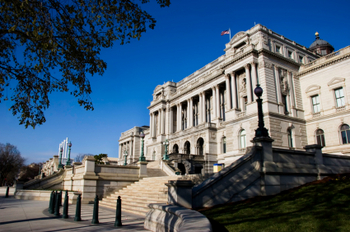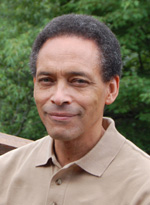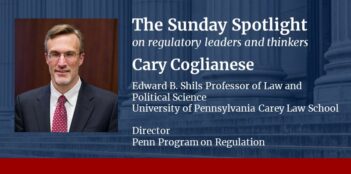
Differing bureaucratic missions produce different regulatory environments for visitors at two major government libraries.
I once undertook to assist my younger son Paul with his undergraduate senior thesis, an endeavor that led to a day spent in each of two federal libraries. I had anticipated two days of relative tedium. I had not anticipated receiving yet one more stark lesson in how superficially similar organizations can develop sharply contrasting operating styles deriving from fundamental (if, to the average person, rather subtle) differences in the nature of their respective organizational missions. The institutions I visited were the law library in the Madison Building at the Library of Congress and the main research room in the National Archives (more formally the National Archives and Records Administration).
In both cases I lacked the necessary credentials to gain admission and so had to start my visit by obtaining an identification card.
At both facilities I had to show my driver’s license and get photographed for a new plastic photo ID. In the Library of Congress this took all of five minutes. After an optional research consultation with a library staff member I was off to find my documents.
By contrast, in the Archives I first sat through a mandatory ten-minute computer-screen slide presentation covering the institution’s multiplicity of rules, including the proper handling of documents and security procedures. I learned that every piece of paper brought into the building had to be separately stamped and inspected, that my coat, lunch, and notebook had to be left in a locker in the bottom of the building, and that only pencils could be used at any time. My Library of Congress reader card would be good for two years but my National Archives researcher card would require renewal after only one.
Getting into the law library reading room at the Library of Congress required my signing a looseleaf binder in front of a guard who did not bother to look at my new card. By contrast, my Archives card was twice examined carefully by staff who took care to watch me sign in.
While in the law library I was seated at a desk searching for, downloading, and printing documents via a Lexis-Nexis database. No one monitored my movements and I was free to roam about the room, taking anything I had brought in with me, or printed in the room, wherever I chose.
The Archives was another matter altogether. Documents had to be requested on carefully filled-out forms at designated “pull times” and only after painstaking (and sometimes futile) work in a reference room to determine their exact location. Cameras were everywhere and there was a strict regimen for requesting, handling, copying and returning materials. One signed for materials on receiving them and again on returning them. The rules I had learned upon registration that morning turned out to include only the most general requirements. I was chastised sternly by two library staff members for innocently (and carefully) removing a staple from a document for copying; this was their task, not mine. I was given precise instructions about how to paper-clip formerly stapled materials back together. Boxes of documents had to remain visible in the reading room at all times and only one folder could be removed from any box at a time. I was warned by staff against having documents in the reference room where one determines their location; they had always to remain among the research tables where cameras could monitor their handling.
When I encountered documents for photocopying that had once had been classified at even the lowest level (no matter how minor, and even if they had been officially declassified for decades) I had to get a staff member to fill out a special numbered tag to place in the corner of the photocopier screen attesting to the declassified status of each copied page.
When I left the Library of Congress the scrutiny by a single guard was cursory. Departing visitors needed only open a bag for a quick check or wave a stack of loose papers to show that they had no books. Had I brought in a book I could quickly have proven it was mine and not the library’s.
When I left the Archives for the day, I had to sign out, show my card twice, and wait as a staff member painstakingly examined each document. Only then could I retrieve my property from the downstairs locker room and leave. Books were not a concern since I was not permitted to enter with them in the first place.
Why these differences between agencies of government so superficially similar?
The reason has to do with task-based differences that might not, at first blush, strike most people as terribly significant. The Library of Congress (or at least its law library, which I was using) held no information that had ever been classified and made available to patrons no materials that were not readily replaceable. Most of what one would want there has been published or printed explicitly for distribution on an unlimited basis.
The National Archives, on the other hand, must tread a fine line. It has custody of the accumulated original historical record of American national governance and administration. It must preserve, in perpetuity, many millions of documents, many of which are physically delicate or politically sensitive. Many exist nowhere else and, without special precautions, would be stolen, lost or damaged beyond use. But the Archives cannot simply preserve this vast stock of material. Doing that would require merely putting it all into a dark, cool, dry, acid-free room behind a strong door. Trouble is, the material must also be made available – to scholars, to journalists, and to ordinary citizens researching anything that motivates them sufficiently to appear at the Archives, which they may do whenever they wish.
If the National Archives strikes the casual visitor as exceedingly rule-bound and controlling – I am happy to report my day there was the closest I’ve come to a prison experience – this derives necessarily not from any in-built bureaucratic hunger for rules or “red tape” but rather from being given an inherently conflicted mission that it can execute only through a series of carefully orchestrated tasks requiring: (a) that visitors be quickly and carefully instructed, and zealously monitored, on compliance with an abundance of rules, and (b) that organizational staff, in turn, be carefully trained and rewarded for diligently enforcing those rules.




